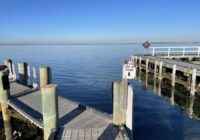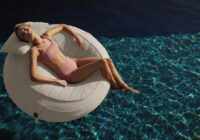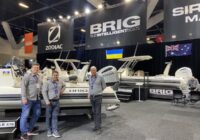Pathetic, incurable “tragic” that I am, my collection of old outboards is ever expanding. I was extremely fortunate to pick up these two examples of what, in my opinion, was one of the best portable outboards ever made. As stated before, I’ve always had a soft for early Suzukis, back in the era when their decals and graphics were rather colourful and in your face (maybe even verging on a tad OTT), and when all the fledgling Japanese brands – but especially Suzuki and Tohatsu – believed that the best way to get a product out there was to actually make it look a little “out there”.
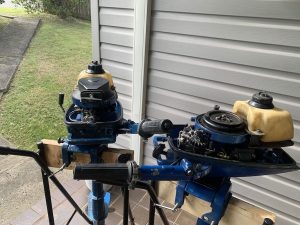
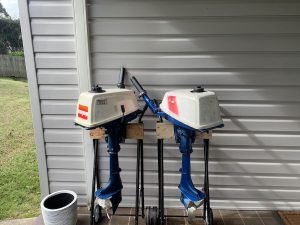

These two little jewels are 1981 “J-model” DT3.5s, and they were magnificently refined, quiet and powerful little motors in their day. The DT3.5 was water-cooled, whereas the Yamaha and Tohatsu of that era were air-cooled, and despite being only a single-cylinder motor (just on 70 cc), it was inordinately smooth, with no vibration through the tiller handle – not a “thumper” at all, in fact.
The Suzuki, at 18 kg, carried a tiny weight penalty over the Yamaha and Tohatsu, which both came in at about 16 kg – but I’d put this small difference down to the fitment of a water pump, which of course the two competitors didn’t have. Fuel was supplied from an integral overhead tank, but by means of a diaphragm pump instead of purely gravity fed. This was a convenient feature for the time and allowed the use of an external tank – thereby greatly increasing running time.
In this era (the early-mid ’80s), the Japanese had the Americans well and truly beaten in the small outboard segment. True, the ubiquitous and venerable OMC (Johnson/Evinrude) 4 hp was a twin-cylinder, but only 87cc with tiny pistons, and the motors always ran hot due to the relatively large stroke through which the little pistons had to travel. It was rare to see an OMC 4 hp of that era without heat discolouration of the exhaust plate. And it still used a front-mounted sliding magneto lever. The Mercury offering of that era was atrocious – a single-cylinder 3.6 hp unit called “The Gnat”, which had an all-around carrying handle that made the power unit look like a plate compactor.
Those with sharp eyes might notice that these two little Suzukis – despite both being 1981 models – are not quite the same. One has a bottom-mounted, throw-up starter bendix while the other has the more traditional (and more robust) overhead starter. This was a mid-year running change, and the overhead unit was fitted to the last DT3.5s (1982-1984) and on the DT4 from 1985. In typical Suzuki practice, though, they deleted the low-mounted starter but left the casting in the lower pan and just blanked it off – not the cleanest aesthetic practice!
These are both runners and will clean up superbly – I just need to source (or have made) the proper period decals. I might even use them as “sentries” either side of a towering bookcase in my grand oak-panelled study (whenever I can afford a house with an oak-panelled study…).
Danny Casey is highly experienced, undoubtedly idiosyncratic, and immensely knowledgeable about things mechanical, new or old. His knowledge and passion are as a result of spending his whole life in or around anything power-driven – especially marine engines. His passion for boating is second to none, with his life a montage of fabulous memories from decades spent in or around water and boats, both here and in Europe. Danny has spent myriad years in the recreational marine industry in a varied career in which he has bamboozled colleagues and competitors alike with his well-honed insight.

His mellifluous Irish accent, however, has at times been known to become somewhat less intelligible in occasional attempts at deliberate vagueness or when trying to prevent others from proffering a counter-argument or even getting a word in. Frank and to-the-point, but with a heart of gold, it can be hard to convince Danny to put pen to paper to share his knowledge. Marine Business News is grateful for his contributions. Connect with Danny through LinkedIn.





